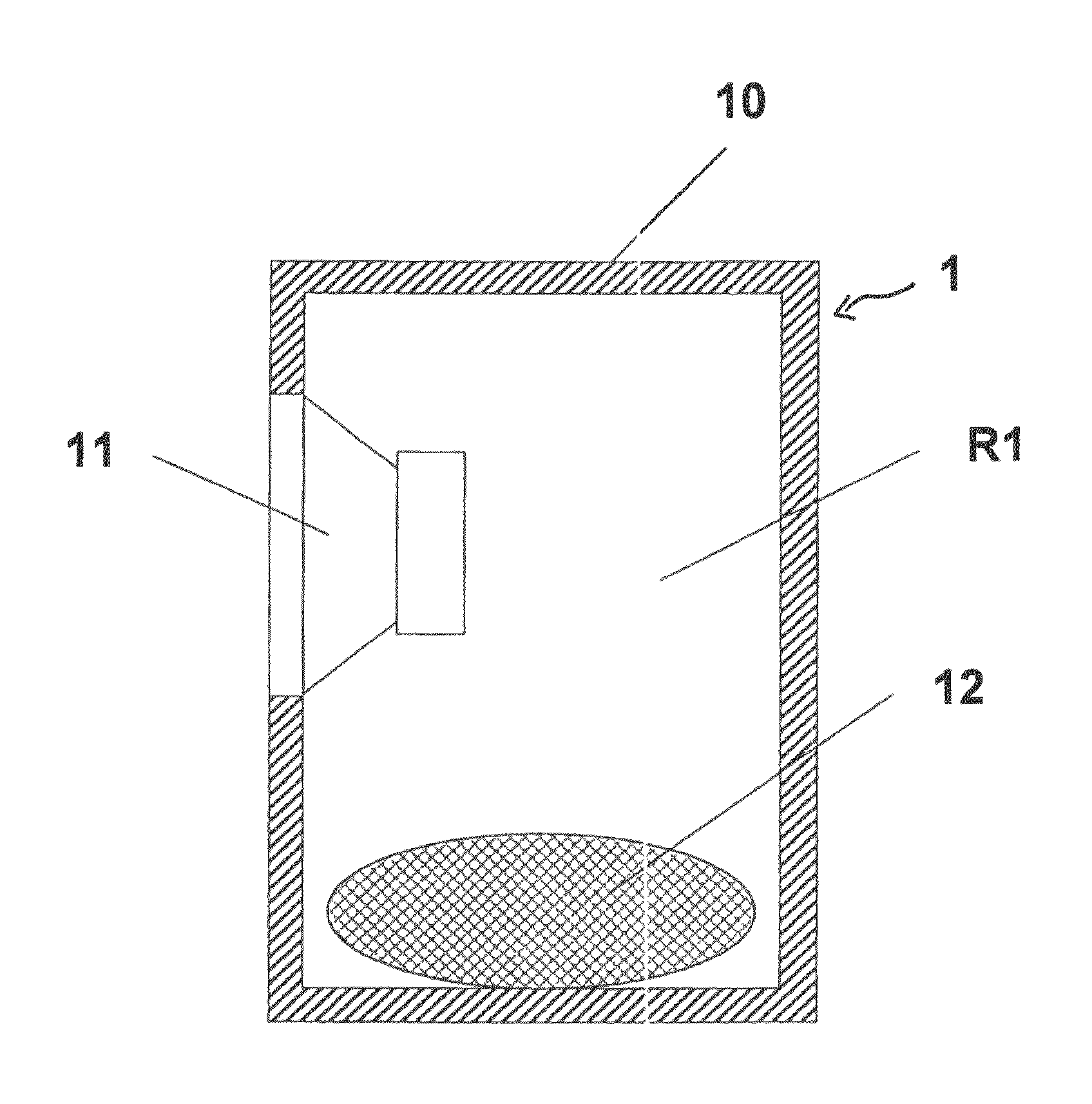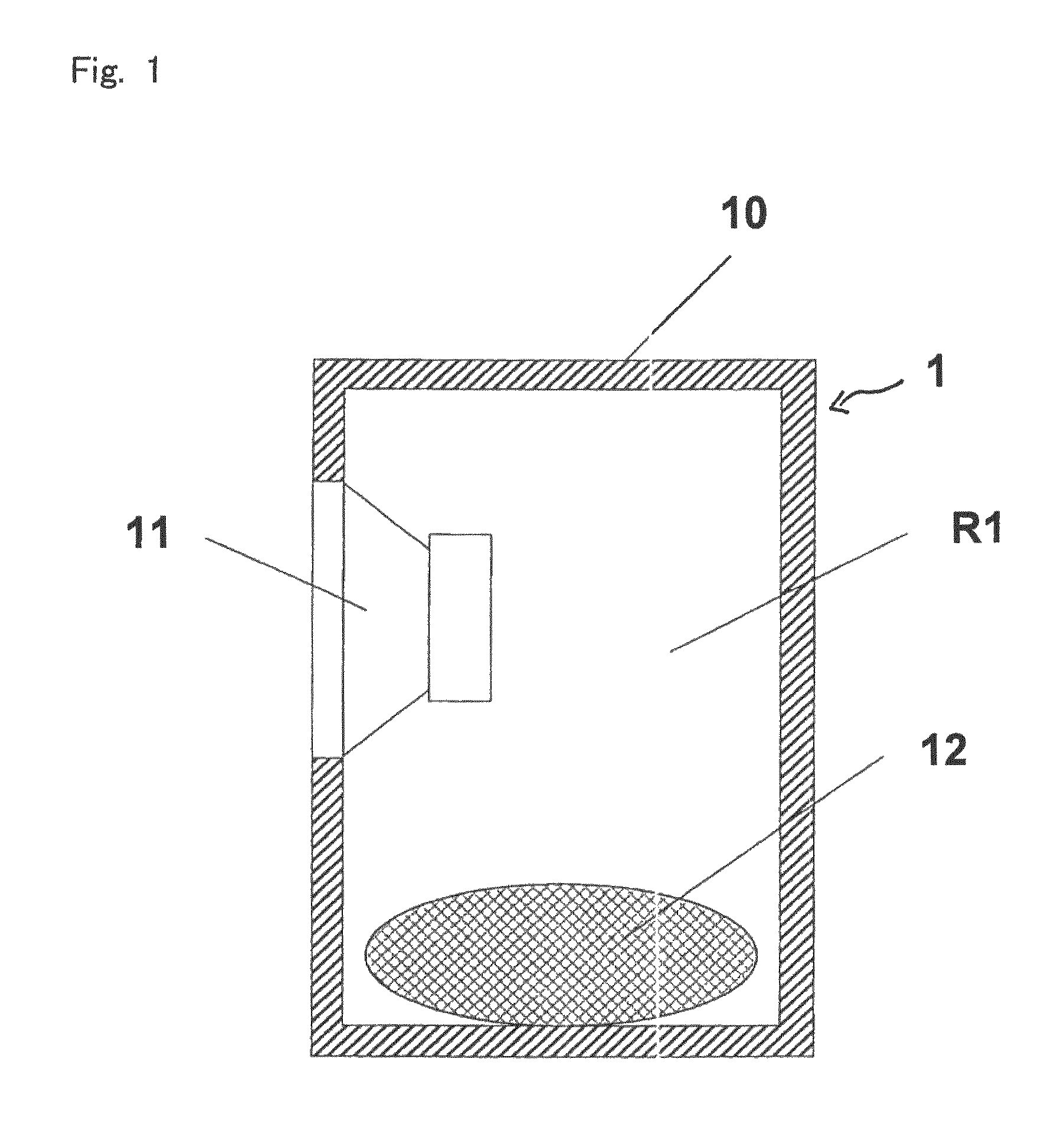Material for speaker device and speaker device using it
a speaker device and speaker technology, applied in the direction of transducer details, pigmentation treatment, alkali metal compounds, etc., can solve the problems of insufficient bass reproduction, difficult bass reproduction, and decrease in sound pressure level, so as to improve sound pressure level, good bass reproduction effect, and alleviate pressure fluctuations of gas
- Summary
- Abstract
- Description
- Claims
- Application Information
AI Technical Summary
Benefits of technology
Problems solved by technology
Method used
Image
Examples
example 1
[0076]A coconut shell was carbonized, and then activated with a water vapor-containing combustion gas at 850° C. to obtain a granular activated carbon having an average particle size of 0.35 mm. FIG. 3 shows a cumulative pore volume curve of this activated carbon in conjunction with a pore distribution curve thereof. In FIG. 3, a1 is the cumulative pore volume curve, and b1 is the pore distribution curve. Values of the cumulative pore volume curve a1 on the vertical axis represent the cumulative pore volume (ml / g) per g of the activated carbon. The vertical axis of the pore distribution curve b1 shows relative values. This activated carbon had a cumulative pore volume of 0.52 ml / g for the pores each having a radius of 18 angstroms or less and a cumulative pore volume of 0.03 ml / g for the pores each having a radius of 18 to 50 angstroms.
[0077]FIG. 4 shows a graph showing the amount of water adsorbed (g) per g of this activated carbon with respect to the relative humidity. This graph ...
example 2
[0078]A phenol resin fiber was carbonized, and then activated with a water vapor-containing combustion gas at 850° C. to obtain a cloth-like activated carbon having an average thickness of 0.50 mm. This activated carbon had a cumulative pore volume of 0.72 ml / g for the pores each having a radius of 18 angstroms or less and a cumulative pore volume of 0.00 ml / g for the pores each having a radius of 18 to 50 angstroms. A graph of the amount of water adsorbed for this activated carbon similar to that in Example 1 is shown in FIG. 4.
example 3
[0079]A coconut shell was carbonized, and then activated with a water vapor-containing combustion gas at 860° C. to obtain a granular activated carbon having an average particle size of 0.30 mm. This activated carbon had a cumulative pore volume of 0.53 ml / g for the pores each having a radius of 18 angstroms or less.
PUM
| Property | Measurement | Unit |
|---|---|---|
| radius | aaaaa | aaaaa |
| radius | aaaaa | aaaaa |
| radius | aaaaa | aaaaa |
Abstract
Description
Claims
Application Information
 Login to View More
Login to View More - R&D
- Intellectual Property
- Life Sciences
- Materials
- Tech Scout
- Unparalleled Data Quality
- Higher Quality Content
- 60% Fewer Hallucinations
Browse by: Latest US Patents, China's latest patents, Technical Efficacy Thesaurus, Application Domain, Technology Topic, Popular Technical Reports.
© 2025 PatSnap. All rights reserved.Legal|Privacy policy|Modern Slavery Act Transparency Statement|Sitemap|About US| Contact US: help@patsnap.com



